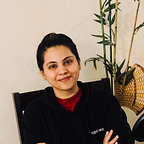3 reasons why cross-functional roles are the future
Functionally grouped teams are designed to create a predictable future. Cross-functional teams are designed to be agile to the need in the now.
In a real world moment, where we’re all just taking a chance with our selves and each other — it’s time to allow our “collective agility” to tell us what to do.
Welcome to Role X.0: The Schrödinger’s Hat
In an agile world, our roles are expected to be dynamic — we’re reinventing ourselves in the moment & nimbly aligning with others, serving the need in the now. Roles in this world, are designed for “adaptation”.
Agility in oneself, families, societies or organizations takes committed progressive effort (both at an individual level and collective level) sustained over a period of time on a perpetually transformative journey, that at any given moment, offers broadly two choices—
- Change from current state to a new state of agility.
[or] - Maintain status quo.
Businesses are constantly challenged to give up status quo (the groundhog day), to be open to reinventing themselves, to approach needs differently, design value differently to meet changing demand.
Businesses need to run like an “experiment”, and encourage a culture of rapid prototyping & learning.
Here are 3 reasons why cross-functional roles, is a sustainable alternative to work & workplaces.
1. Cross-functional roles inspire agility through ‘playfulness’ as boundaries aren’t taken too seriously
Cross-functional roles do not have static titles or descriptions of responsibility.
Dynamic assumption of responsibilities (and necessary expansion / contraction) is expected to happen in realtime.
Individuals get to engage in a ‘teamsport’, where work happens from a state of playfulness, and one is merely ‘experimenting’ ideas and getting help / cheering others to implement them.
In today’s information age where collective intelligence is pretty much open sourced (let’s call it the Humanity X.O collectives), there’s hardly a need for one to limit themselves to a set of skills. Assistive Intelligence / Automation / Analysis is readily accessible on demand, within a few clicks.
Eliminating conventional “role-specific boundaries” & broadening the conversation, invites new participants for design thinking, problem solving & diverse perspectives — leading to disruptive new outcomes.
To a large extent, cross-functional design thinking is fueled by one’s inherent curiosity / passion to find answers to business problems at hand “starting with why” and life’s most existential questions, on their own.
“People understand under what circumstances they’re working on, in a given project. During a meeting if a designer, with exceptional negotiation skills aspires to drive business conversations with the client, they’re free to do so.”
— Project manager, Codewave
2. Cross-functional roles inspire one to employ common sense & storytelling for briefings
Cross-functional individuals are likely to sense context in the now and interpret / articulate it through a “storytelling” approach.
Individuals are invited to frame the situation, through their own stories — which is highly effective as the sensed context / need is propagated across the team as nano-stories, free-flowing through peer connections and relationships of trust. Individuals listening to the stories, mirror the feeling (fire-up same patterns of neurons) and decode the message. Collectively, the team comes up with a “screenplay” for action.
As the team gets access to more than one way of framing a situation / reframing problem statements, individuals gain a near-360 perspective on what needs done, with limited / documented briefing on the context.
This also creates a path of least resistance / high receptivity — for new information / pivots to be passed onto the team through stories, as it taps into our inherent ability to emote and feel the need ourselves.
Making “context setting” an act of storytelling, gets the context setter to deliver artistic expressions — so the context receivers can mirror the idea, energy efficiently.
Rational thinking may fall short, employ emotional mirroring — to drive simplicity & clarity.
“When I’m trying to articulate a human need, difficult to convey in words — I try to enact an emotion, recreate a scene from my story — using techniques from Bharatnattyam (an ancient Indian dance form). This makes briefings entertaining & I get to sense the impact on the listener. This has worked well for vision articulation, with my creative partners.”
— Co-Founder, Codewave
3. Cross-functional roles embrace unpredictability in the now, thereby opening quantum possibilities
Traditional roles in business are designed to create a predictable outcome. While this can lower the risk of return on investment, this also limits / restricts the multifarious possibilities the business can access.
Cross-functional teams in an “Agile” organization, make work an “experiment” that defines a project as shifting from a state A to a state B. Individuals and teams are free to imagine a path, evaluate possibilities at each moment, make choices dynamically and eventually get to state B. A retrospective is conducted at state B to observe the path traversed & summarize learning, so individual & collective roles (at different moments of context) can be varied in the future for more open journeys & optimal results.
“I’m mind blown at how a self-assembled team starts with a plan & explores freaking new possibilities”
— Co-Founder, Timely
Codewave’s product Timely, has been our bravest social experiment (so far) in productizing our culture — to make the world of work & workplaces more open, for generations to come.
Codewave was founded in 2013, to create an environment of radical transparency, empathy and peer comfort — helping individuals to go on a fearless adventure of knowing what to do, when no-one’s there telling what to do. We continue to be a living, social experiment open to individuals / families / societies / organizations finding self sustainable alternatives to work. We’re thankful to everyone on our journey so far, to have shaped us to be who we are, stay true to our experiment and to who we aspire to become.
For all we know, maybe this’s worth taking a chance to reimagine a new world.
